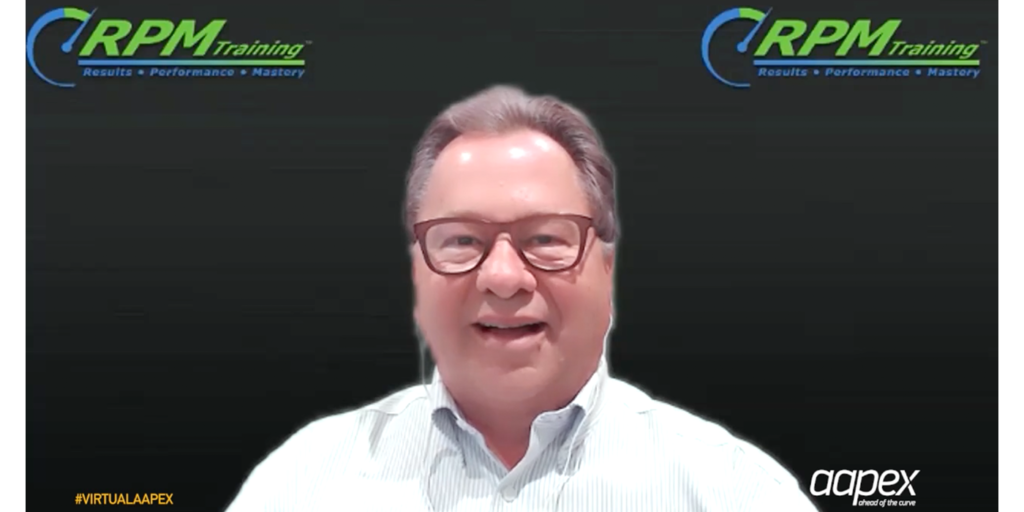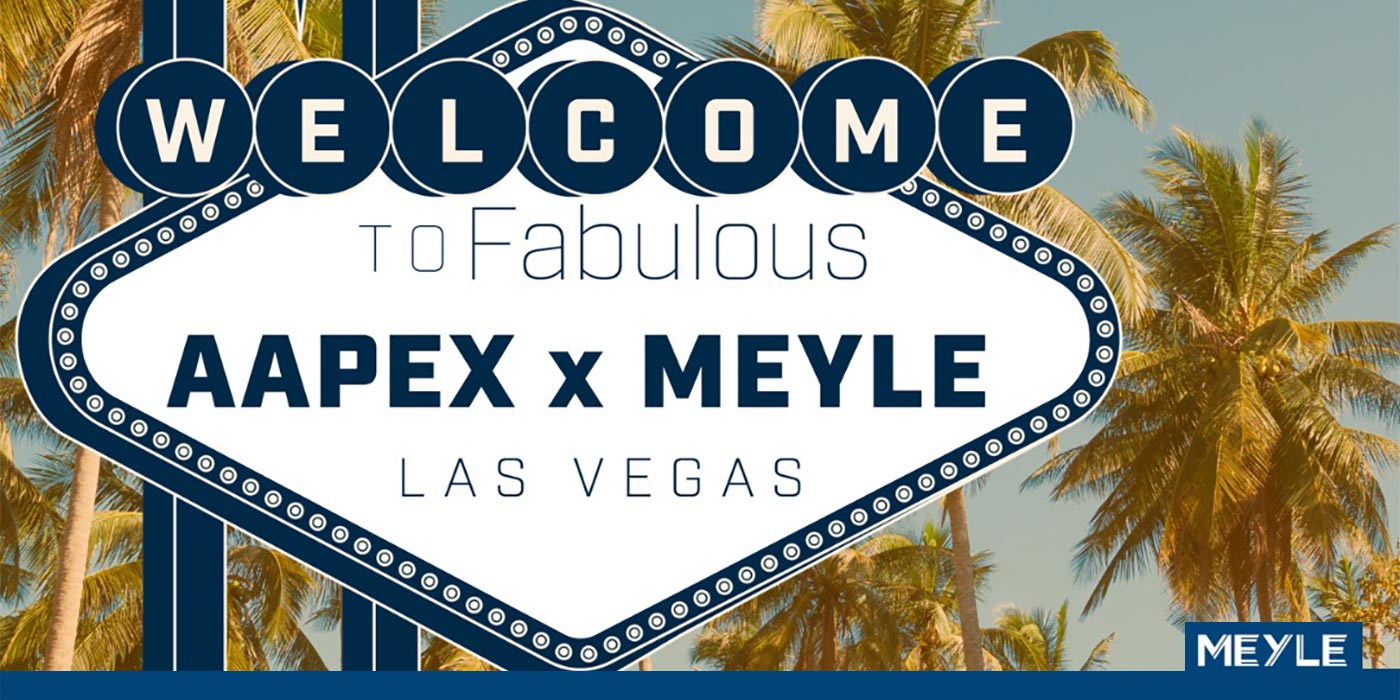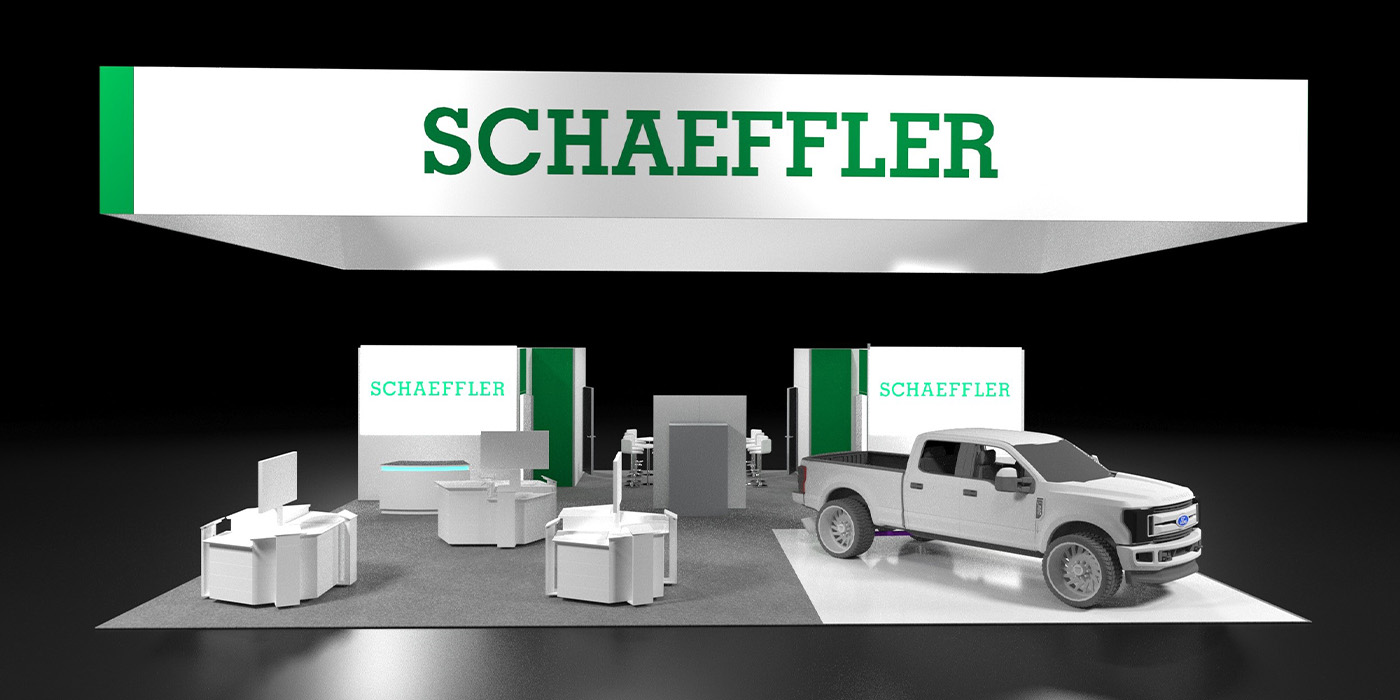Going from a price-based model to a value-based model is all about shifting your perspective, and perhaps, your business model, according to Murray Voth, founder of RPM Training, who shared his three-step approach at the AAPEX Virtual Experience.
Voth’s management training session, called “Breaking the Mold: Getting Out of the Price-Based Model and Into the Value-Based Model,” reviewed the history behind why automotive repair businesses maintain a price-based model and solutions for getting out of it. Voth says those include: finding lost billable hours, learning the best way to look after a client’s vehicle and understanding the difference between customer service and the client experience.
Why Do We Stay in a Price-Based Model?
We have history to thank for that.
Voth started the training session by outlining three challenges the automotive aftermarket has in selling and communicating its value. Among the top three are technician pay, making enough net profit to stay current and consumers underservicing their vehicles to the tune of $26 billion per year.
These challenges stem from a history of selling things versus time, he said. As a result, he claims that shops aren’t making the gross profit they should. An average shop is recording only 4.3-5.3 sold hours per technician per day and the average repair order is half of what it should be.
“We taught the public to focus on price rather than service and long-term vehicle care,” Voth said. “We’ve created the ultimate grudge-based purchase.”
Voth pointed to car dealerships and service stations as the reason for this practice.
Both car dealerships and service stations sold commodities, Voth said. For example, service stations of the past sold fuel, which brought in a high gross profit margin. In the ’80s, as many of these service stations converted to self-serve gas stations or automotive repair shops, business owners still focused on selling the commodity or product that they offered, not selling the automotive repair service their shops performed.
“There’s a focus on products because that’s what the manufacturers want you to focus on,” he said. “Our current business model is still buried in the past.”
Getting Paid for What You Do
With the average shop billing out 4.2 to 5.3 hours sold per technician, Voth claimed that shops aren’t calculating and charging for what technicians may encounter that adds time to a repair order.
For example, Voth said extra labor time should be considered when the vehicle exhibits advanced age, high mileage, lack of maintenance or abuse. Shops should also charge for the extra effort it takes to free up seized bolts, replace broken fasteners, remove rust, degrease and clean parts. Additional service time should also be added when more than normal road testing is required.
“Severe service times are displayed for your use as needed,” he emphasized.
Labor guides often don’t consider the rust and corrosion the technician might experience during a job or if a vehicle has been modified in a certain way. This means that the labor time in a guide may not be enough for a particular service, depending on the job.
Voth advises that shops add 10% to the estimate for rust, corrosion, seized or broken bolts and other unexpected problems that might come up. If adding more money to the repair order results in a serious difference from what the customer authorized, the shop should call the customer back and explain the updated estimate.
Voth describes more ways to correctly calculate the time jobs take during his presentation at the AAPEX Virtual Experience.
The Best Way to Look After a Vehicle
Voth said the best way to “look after” a customer’s vehicle is by earning your client’s business and switching to a consultant role instead of trying to sell them services they may not understand. Doing this, he said, reduces one-line invoices and decreases trips back to the shop for the customer.
Voth said shops can turn their customer interactions into consultation services by following his “8 Commandments of Consultation.” While Voth delved into each point extensively, he said letting customers know the information the shop uses to make professional recommendations is critical.
He explained the first four commandments as promises shops should make to customers. Those include: “We will listen carefully to you regarding the performance, condition and any concerns you may have with your vehicle;” and, “We will review the list of services recommended by the manufacturer of your vehicle as identified by the professional servicing technician based on industry experience and driving conditions.”
Voth said shops should also state their goals in this consultative process, For example, “Our goal is to prevent surprises from unexpected vehicle breakdowns, or an unexpected large invoice” as well as, “We are here to serve you and help you understand your vehicle’s needs clearly.”
Giving customers confidence in their decisions should be the goal of any consultation, he said. Their trust in your business as a quality professional service provider will allow you to keep them as a client and encourage them to refer your shop to their family and friends, Voth said.
Customer Service vs. Client Experience
Creating a memorable client experience is “icing on the cake” for customers, Voth said. With a better experience, clients are willing to pay more, which leads to more profit for auto repair businesses. However, a key issue shops face is that consumers feel that having their vehicle serviced is inconvenient.
“More people would get more work done on their vehicle if pickup and drop off wasn’t a hassle,” he said.
Offering valet services for large jobs, courtesy vehicles and a 24-hour key drop box are a few suggestions Voth outlined for mitigating that “hassle.”
“We want to make the repair and service experience easy,” Voth said. “The pandemic has given us an opportunity to experiment and play with this.”
Digital processes—such as the ability to make appointments online, receive reminders about their service, authorize repairs and pay for services digitally—are also necessary for shops to do business the way customers want to interact with them. For example, he said sending a customer a video of a technician doing an inspection is an example of customer service. Taking it further and adding a Zoom meeting link to the email or text so that customers can talk to a service advisor or technician after watching it creates a client experience.
Adding to the client experience also means looking after their future automotive needs, Voth said. For example, if a customer comes in for a winter tire changeover, book their appointment to change back to their other tires four to six months down the line.
“Don’t wait for them to come to you,” he said. “Pre-book regular clients and let them know they’re preferred.”
To see Voth’s entire presentation and learn more ways to break out of the price-based model, go to www.aapexshow.com and register for the AAPEX Virtual Experience. To find his session, click the agenda tab on your dashboard.














